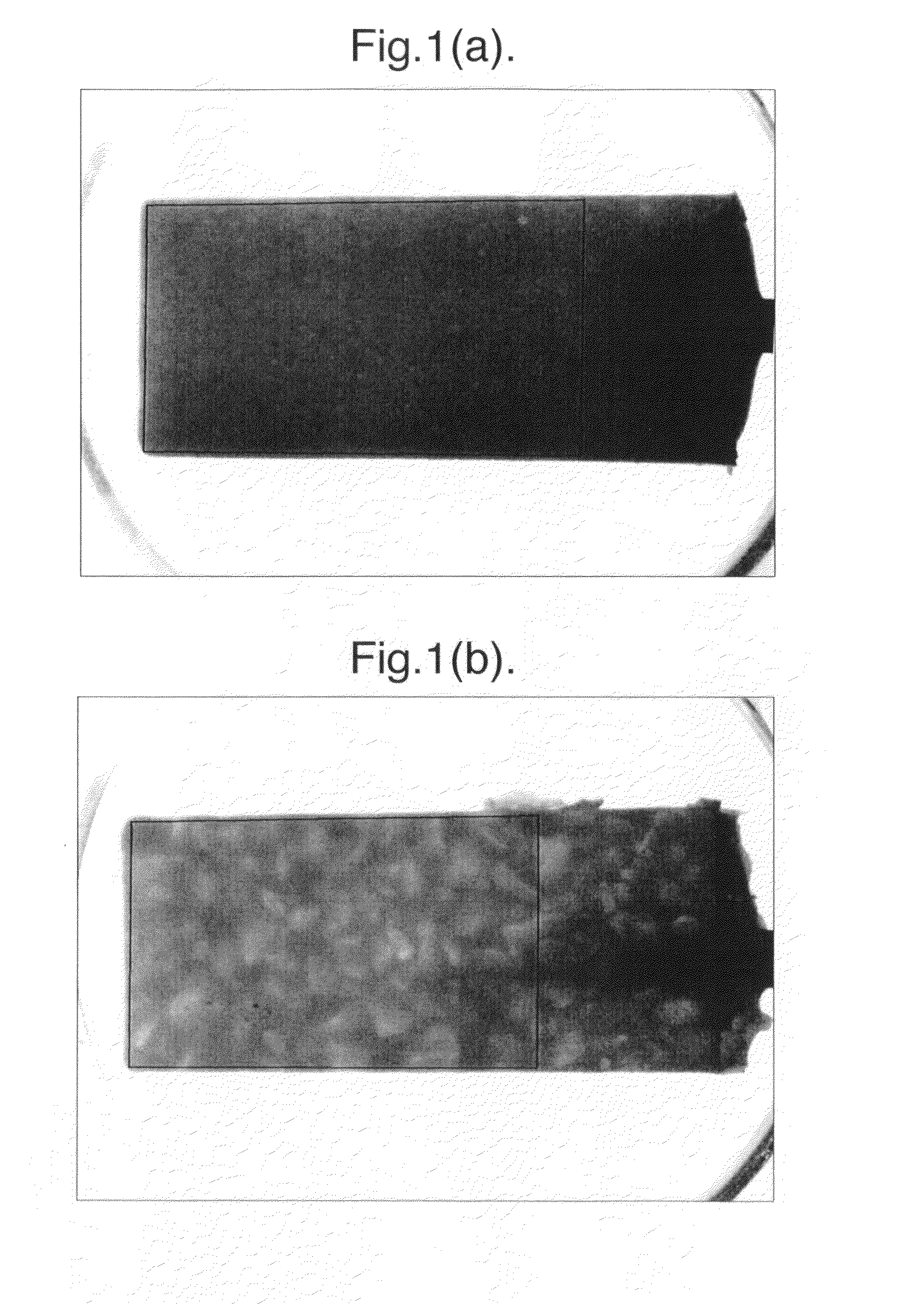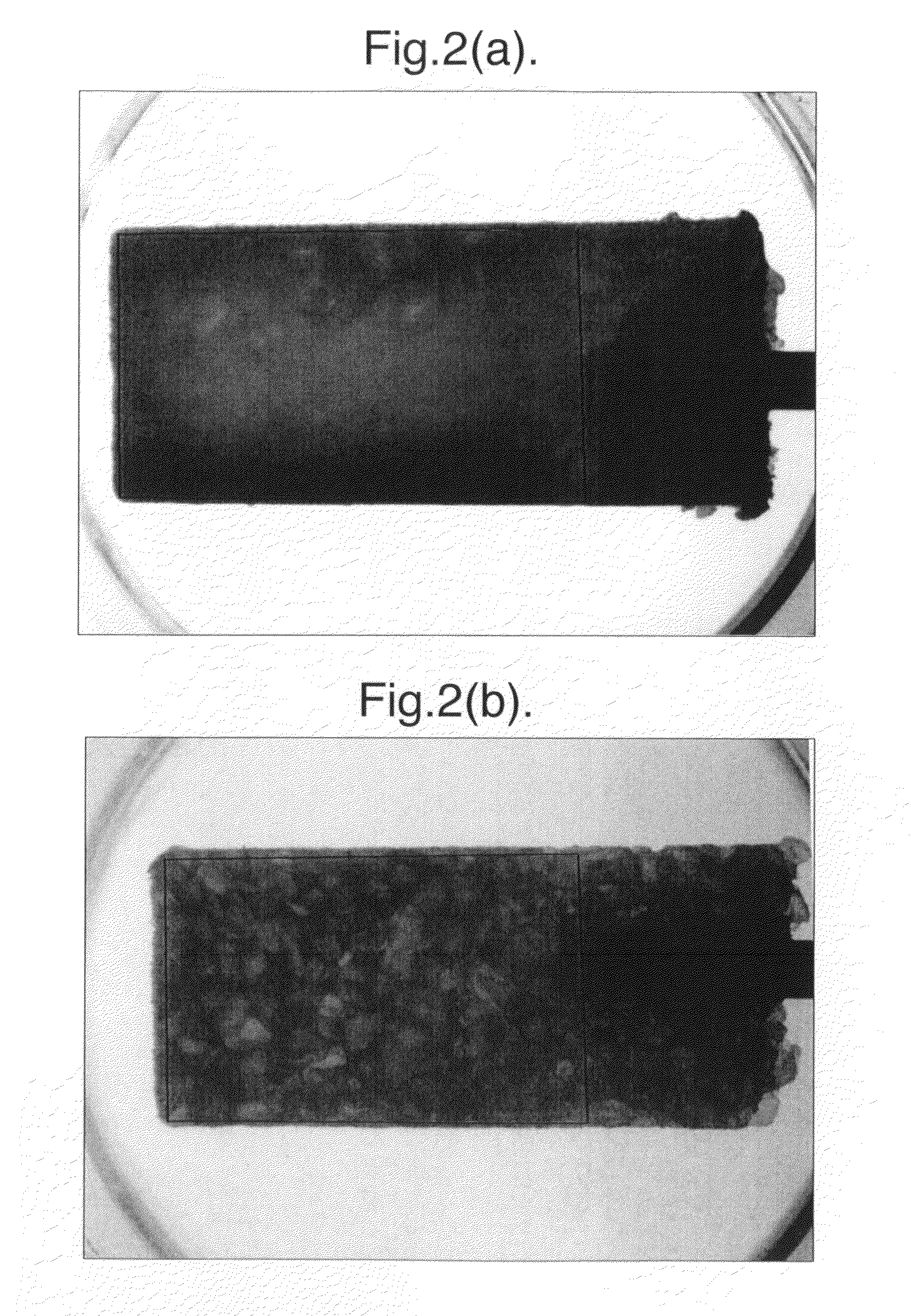Frozen confection
a technology of confections and confections, applied in confectionery, food shaping, food science, etc., can solve the problems of parents' worries about damage to children's teeth, and achieve the effect of unusual and attractive appearan
- Summary
- Abstract
- Description
- Claims
- Application Information
AI Technical Summary
Benefits of technology
Problems solved by technology
Method used
Image
Examples
example 1
[0035]Water ice mixes were prepared according to the formulation shown in Table 1.
TABLE 1Ingredient (wt %)MixFinal productSucrose2010Locust bean gum0.30.15Citric acid0.50.25Lime Flavour0.20.1WaterTo 100To 100
[0036]The mix was prepared by heating the water to 81° C. and then mixing in the sucrose and LBG. The mixture was stirred for 20 minutes and cooled to 5° C. Water lost through evaporation was compensated for, and the citric acid and flavour was then added.
[0037]Transparent ice cubes (i.e. not containing gas bubbles) were made using a Scotsman AC106 ice maker. The ice cubes were cooled to −25° C. and then crushed using a Scotsman Crushman 360, which resulted in a distribution of ice particle sizes. The particles were then sieved to obtain ice particles of narrower size ranges, namely 1-2 mm, 2-5 mm or 2-8 mm (a new batch of ice cubes was crushed to produce each size range).
[0038]The sieved ice particles (at −25° C.) were added into the chilled mix (+5° C.) so that they made up 50...
example 2
[0040]A series of mixes, shown in Table 2, were prepared as described in example 1. Ice particles (2-8 mm) produced as described in example 1 were combined with the mixes in amounts from 25 to 65% (by weight of the final product). Each mix was formulated so that the composition of the final product was the same as in Example 1. Ice lollies were produced as described in example 1.
TABLE 2Added iceIngredient (wt %)25%40%50%65%Sucrose13.3316.672028.57LBG0.200.250.30.43Citric Acid0.330.420.50.71Lime Flavour0.130.170.20.29WaterTo 100To 100To 100To 100
[0041]FIG. 2 shows photographs of the resulting ice lollies for 25% and 65% ice particles. It can be seen that the larger amount of ice particles produced a more translucent product.
example 3
[0042]A mix having the composition given in Table 3 was produced by heating water to 85° C. and then mixing in the sucrose and LBG. The mixture was stirred for 25 minutes and then cooled to 5° C. Water lost through evaporation was compensated for, and the citric acid and flavour was then added.
TABLE 3Ingredient (wt %)MixFinal productFructose27.511Locust bean gum0.3750.15Citric acid0.6250.25Raspberry Flavour0.3750.15Raspberry Pieces010WaterTo 100To 100
[0043]Ice particles were produced as described in example 1 (2-8 mm size range). The sieved ice particles (at −25° C.) were added into the chilled mix (+5° C.) so that they made up 50% by weight of the final product. The particles were stirred in by hand using a pallet knife until a uniform dispersion was obtained. Frozen raspberry crumb pieces (2-4 mm in size) at −25° C. were then added so that they made 10% by weight of the final product (which has the composition shown in table 3). The raspberry pieces were mixed into the ice crystal...
PUM
 Login to View More
Login to View More Abstract
Description
Claims
Application Information
 Login to View More
Login to View More - R&D
- Intellectual Property
- Life Sciences
- Materials
- Tech Scout
- Unparalleled Data Quality
- Higher Quality Content
- 60% Fewer Hallucinations
Browse by: Latest US Patents, China's latest patents, Technical Efficacy Thesaurus, Application Domain, Technology Topic, Popular Technical Reports.
© 2025 PatSnap. All rights reserved.Legal|Privacy policy|Modern Slavery Act Transparency Statement|Sitemap|About US| Contact US: help@patsnap.com



